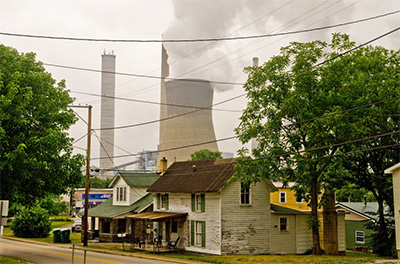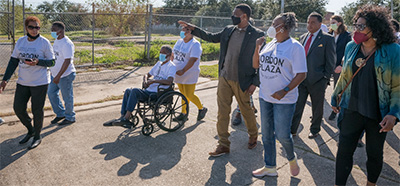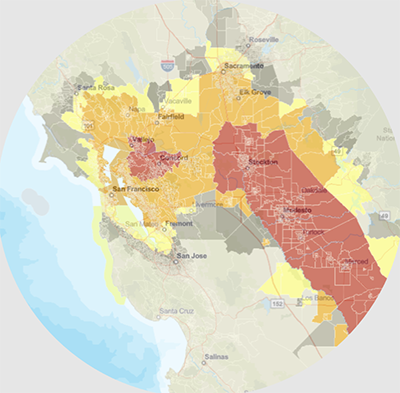May 5: Environmental Justice & Air Quality
Environmental injustice predominately affects minority, low-income, tribal, and other vulnerable populations. Many of these communities are surrounded by environmental harms and risks (industrial, landfills, refineries, etc.), which creates pollution in the air, water, and land and can also affect health. Air quality can vary among communities, and usually poor air quality affects the most vulnerable populations. Read about our own EPA employee, Debra Lee, who experienced first-hand living in a community with environmental justice concerns. U.S. EPA and other AirNow Partners work to address environmental justice and make sure everyone can Be Air Aware and Prepared.
Environmental Justice Core to Federal Work

On January 26, 2021, President Biden signed the Executive Order (EO) 14008 “Tackling the Climate Crisis at Home and Abroad.” Section 219 of the EO – “Securing Environmental Justice and Spurring Economic Opportunity,” states that the United States must ensure that environmental and economic justice are key considerations in how we govern.
In January 2021, President Biden also signed EO 13985 “Executive Order On Advancing Racial Equity and Support for Underserved Communities Through the Federal Government” directing EPA, along with other federal agencies, to assess whether underserved communities and their members face systemic barriers in accessing benefits and opportunities through the federal government.
Environmental Justice (EJ) is a critical part of the mission of all federal agencies. EPA is working diligently to develop programs, policies, and activities to address the disproportionate health, environmental, economic, and climate impacts on disadvantaged communities.
Environmental Justice at EPA
EPA defines Environmental Justice (EJ) as the fair treatment and meaningful involvement of all people regardless of race, color, national origin, or income, with respect to the development, implementation, and enforcement of environmental laws, regulations, and policies. This goal will be achieved when everyone enjoys:
- The same degree of protection from environmental and health hazards, and
- Equal access to the decision-making process to have a healthy environment in which to live, learn, and work.
Environmental injustice predominately affects minority, low-income, tribal, and other vulnerable populations. Many of these communities are surrounded by environmental harms and risks (industrial, landfills, refineries, etc.) which creates pollution in the air, water, and land and can also affect health. Air quality can vary among communities, and usually poor air quality affects the most vulnerable populations. Read about our own EPA employee, Debra Lee, who experienced first-hand living in a community with environmental justice concerns.
To learn more about how EPA addresses environmental justice, visit https://www.epa.gov/environmentaljustice to look at EPA’s Fiscal Year 2022-2026 Draft Strategic Plan released in October 2021.
Journey to Justice
 To help spotlight some of the environmental justice concerns in low-income and minority communities, EPA Administrator Michael S. Regan embarked on a Journey to Justice tour in November 2021. Administrator Regan spoke face-to-face with residents about their environmental concerns, including air quality as he toured their communities.
To help spotlight some of the environmental justice concerns in low-income and minority communities, EPA Administrator Michael S. Regan embarked on a Journey to Justice tour in November 2021. Administrator Regan spoke face-to-face with residents about their environmental concerns, including air quality as he toured their communities.
Read the new release announcing bold action to protect communities at https://www.epa.gov/environmentaljustice.
EJScreen
 EPA has updated and redesigned EJScreen, named “EJScreen 2.0”, which is the Agency's publicly available environmental justice (EJ) screening and mapping tool. Specifically, the environmental and demographic data has been updated, which serves as the backbone of EJScreen. This tool and data may be of interest to community residents or other stakeholders as they search for environmental or demographic information.
EPA has updated and redesigned EJScreen, named “EJScreen 2.0”, which is the Agency's publicly available environmental justice (EJ) screening and mapping tool. Specifically, the environmental and demographic data has been updated, which serves as the backbone of EJScreen. This tool and data may be of interest to community residents or other stakeholders as they search for environmental or demographic information.
The new version of the tool can be accessed at: https://ejscreen.epa.gov/mapper. More information and other documentation can be found on the EJScreen webpage at: https://www.epa.gov/ejscreen.
Climate and Economic Justice Screening Tool
The White House Council on Environmental Quality (CEQ) (Learn more about the CEJST) released its Climate and Economic Justice Screening Tool (CEJST). The purpose of the tool is to support Justice40 efforts and to help Federal agencies identify disadvantaged communities that are marginalized, underserved, and overburdened by pollution. This is a beta version and CEQ will be accepting public comments until May 25, 2022. The tool can be found at: https://screeningtool.geoplatform.gov/en/
Why Environmental Justice is Important to Me
 “From 1981 to 1984, my family lived across from a poultry processing facility in Robersonville, NC. I remember so vividly the foul odor we would endure on a daily basis, usually around the same time of day, it physically sickened me to the point where I often felt nauseated and didn’t want to go outside. It didn’t matter if you were indoors – you couldn’t escape the smell. Most families who lived in the development were there because it was the most affordable housing option with proper living conditions, like indoor bathrooms and heating. I remember praying my parents would find another place for us to live. Eventually, my prayers were answered and in January 1984 (my senior year), we moved away from the facility and back to Pitt County, NC. I had no idea that, sixteen years later, I would find myself working for the U.S. Environmental Protection Agency, in the Office of Air Quality Planning and Standards helping to ensure clean air for everyone.”
“From 1981 to 1984, my family lived across from a poultry processing facility in Robersonville, NC. I remember so vividly the foul odor we would endure on a daily basis, usually around the same time of day, it physically sickened me to the point where I often felt nauseated and didn’t want to go outside. It didn’t matter if you were indoors – you couldn’t escape the smell. Most families who lived in the development were there because it was the most affordable housing option with proper living conditions, like indoor bathrooms and heating. I remember praying my parents would find another place for us to live. Eventually, my prayers were answered and in January 1984 (my senior year), we moved away from the facility and back to Pitt County, NC. I had no idea that, sixteen years later, I would find myself working for the U.S. Environmental Protection Agency, in the Office of Air Quality Planning and Standards helping to ensure clean air for everyone.”
Debra Lee, U.S. EPA






